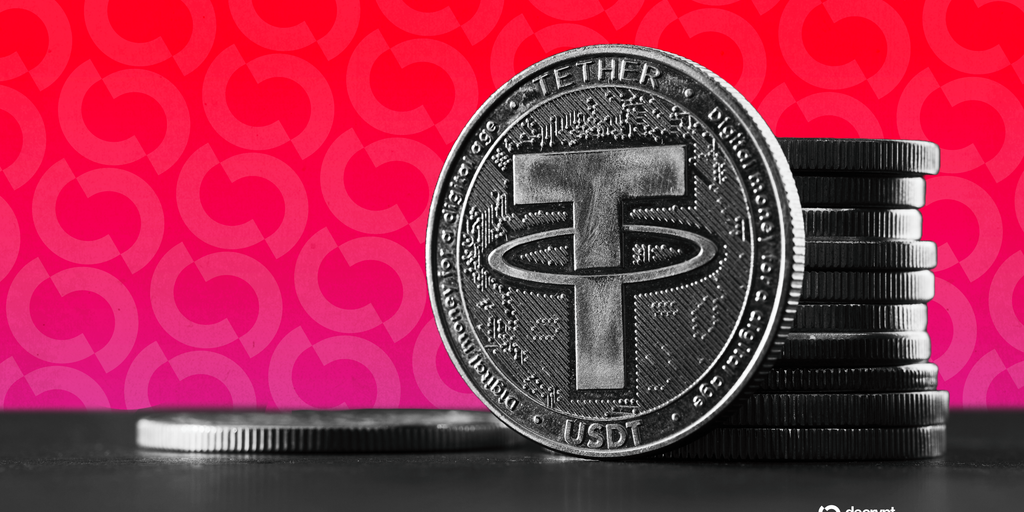S&P Labels Tether’s USDT Peg Resilience ‘Weak,’ Citing Bitcoin Exposure and Reserve Opacity
S&P Global cut USDT’s peg resilience to “weak,” warning Bitcoin-linked reserves and disclosures could amplify stress. Tether pushed back, touting decade-long redemption strength.

Because Bitcoin
November 27, 2025
The debate over what a “dollar” means on-chain just sharpened. S&P Global Ratings said Wednesday that Tether’s USDT faces a higher risk of slipping its 1:1 peg, assigning its peg-maintenance capacity a “weak” score. The crux: reserve assets that can swing—particularly Bitcoin—plus thin disclosure around who holds, safeguards, and intermediates those reserves.
What S&P actually flagged - Undercollateralization risk: If Bitcoin and other higher-risk assets in reserves drop, coverage could fall below outstanding liabilities. - Gaps in disclosure: Limited clarity around custodians, counterparties, and banking partners. - Structural weaknesses: S&P cited constrained transparency on reserve management and risk appetite, lack of a robust regulatory framework, no asset segregation to insulate users from issuer insolvency, and limits to primary redeemability. - Composition context: While a large portion of reserves sits in short-term U.S. Treasury bills and other dollar cash equivalents, S&P argued the mix still leaves room for volatility to transmit through the balance sheet.
Tether’s counter Tether disputed the assessment, arguing USDT has operated for more than a decade while withstanding banking shocks, exchange failures, liquidity crunches, and sharp market swings. The firm said it has never declined a redemption request from a verified customer. CEO Paolo Ardoino took to X to say the company embraces critics and questioned the reliability of legacy ratings models that, in his view, have misled investors before. A company spokesperson added that USDT adoption continues to rise as new use cases emerge.
The real issue: procyclicality in a transactional stablecoin For a token that greases crypto markets, reserve design matters more than branding. USDT is the most-traded asset in the sector and the third largest by market value, with roughly $76.9 billion in 24-hour volume across exchanges, per CoinGecko. When a stablecoin holds assets that rally in good times but can correlate with broad risk-off, it introduces procyclicality: stress in crypto can dent reserve value at the exact moment redemptions spike. That’s a psychological accelerant—users who suspect a weakening buffer redeem faster—and a business constraint, because liquidating risk assets under pressure often crystallizes losses and tightens spreads. Technologically, on-chain transfer speed doesn’t fix off-chain bottlenecks around settlement, custody, or banking rails; opacity around these nodes heightens perceived run risk. Ethically, a dollar-substitute used by traders worldwide carries a higher obligation to disclose, segregate, and ring-fence reserves than a typical corporate treasury, because user trust substitutes for deposit insurance.
Why this lands now Stablecoins are widely viewed as the backbone of crypto liquidity. The market has recent memory of peg breaks: in 2023, USDC traded down to $0.87 after issuer Circle disclosed exposure to Silicon Valley Bank as it was shut by California regulators; in 2022, Terra’s algorithmic UST collapsed, erasing roughly $40 billion in value and cascading into multiple bankruptcies. Those episodes taught traders to reassess counterparty and reserve risk in real time rather than rely on labels.
Tether’s path forward isn’t theoretical. The firm has said it’s open to a Big Four audit; making reserve processes, counterparties, and custodial arrangements verifiable—and segregating assets to protect users from issuer insolvency—would directly address several S&P concerns. Primary redeemability mechanics can also be clarified, so large holders know precisely how and when they can exit at par during stressed periods.
If Bitcoin rallies, this downgrade may feel academic. If volatility returns, the reserve mix and disclosure cadence become the story. Traders and venues will likely watch three items: the share of truly cash-like assets, the existence of enforceable asset segregation, and whether primary redemption is operational at scale when it’s least convenient.
